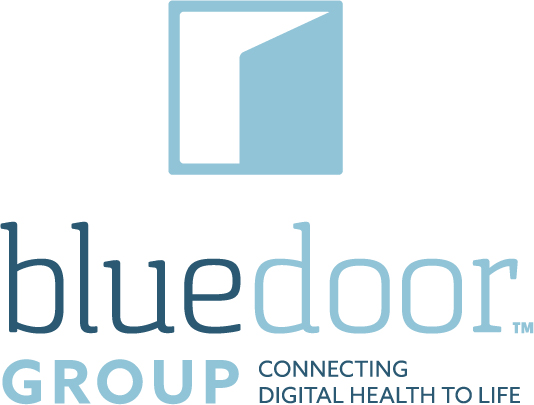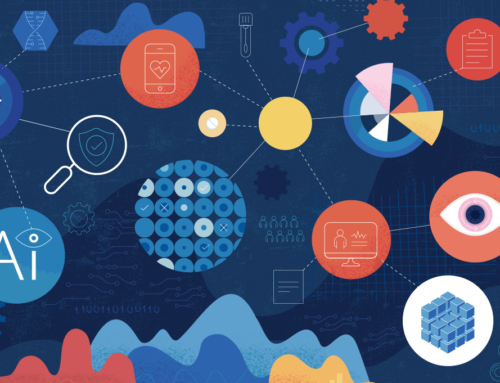By Leyan Phillips, Senior Partner | Bluedoor Group
When I left the UK for sunnier climes in 2012, it was partly due to my ongoing frustration at trying to effect change within the venerated National Health Service, the world’s largest health system. The promise of access to cutting-edge technology and advanced data analytics driving improvements in the quality and cost of patient care on this side of the pond quickly evaporated, however, when the reality of the problems facing the US healthcare system based on my time working with payors and providers became all too real. Whilst the US is undoubtedly home to some of the best healthcare in the world, like the NHS it is also unfortunately home to some of the biggest problems affecting health systems around the world. All the more reason why we’re committed to working tirelessly at Bluedoor to support healthcare companies to address these burgeoning systemic issues.
So, in no particular order, here’s my top 10 list of healthcare problems facing the US today – and what Bluedoor is doing about them.
1. The amount that we spend on healthcare vs. what we get
People Affected = 328 million, Spend = $3.8 trillion
Did you know that the US spends more on healthcare in terms of percentage of GDP than any other country in the world? If that isn’t enough to make you sick (pun intended), we aren’t getting much for our money as the US has the lowest life expectancy and highest suicide rates, chronic disease burden and obesity rates out of all the OECD countries (Organization for Economic Cooperation and Development).
What we’re doing about it: We are supporting emerging health-tech startups like Hippo Technologies, a leader in clinical mobility and wearable computing, to improve access and reduce the cost of specialist care by extending the reach of the available workforce through virtual care.
2. Americans are dying too early
Deaths = 900,000 per year
Every year 900,000 Americans die due to the following top 5 causes:
- Heart disease
- Cancer
- Chronic lower respiratory diseases
- Stroke
- Unintentional injuries
Many of these deaths are largely preventable and are due to health disparities created by people’s social, environmental, and economic disadvantages.
What we’re doing about it: We are working with Omada Health, one of the leading providers of digital health programs that is empowering participants to achieve their health goals through sustainable lifestyle changes.
3. There is huge variation in healthcare pricing
People Affected = 328 million, Spend = $235 billion
Depending on the insurance plan you have, and the healthcare facility you visit, the price of your healthcare can vary by as much as 65%!
The reason for this is that every service is negotiated between insurance companies and providers. Prices charged by Medicare are actually the closest to the real costs of care.
Based on your insurance plan and healthcare facility, the price of an intervention can vary by as much as 65%. This is because the rate for every service is negotiated between payers and providers. Medicare prices are closest to the actual cost of care.
What we’re doing about it: We helped launch and grow Hero Health, a revolutionary new health plan for mid-sized North Carolina employers that can help them save up to 40% on the cost of care with many $0 out-of-pocket options for their employees.
4. Prices are a complete mystery
People Affected = 328 million, Spend = $507 billion
A majority of physicians and patients have no idea as to the price of the care they are delivering or receiving. Compared to other industries, healthcare is the only market I know where its consumers receive a service that they do not know the price of until they get a surprise bill several weeks (or in some cases months) later!
What we’re doing about it: We are working with organizations like FastMed, one of the largest independent Urgent Care providers in the country, to improve price transparency and make essential healthcare more convenient, affordable and compassionate for all.
5. Social Determinants of Health do not drive care
People Affected = 262 million, Spend = $2.5 billion
Even though health is largely impacted by social, economic and behavioral factors that occur outside of clinical settings, only a quarter of hospitals and 16% of physician practices actually evaluate patients on these determinants of health. These factors include things such as access to employment, housing, availability of community resources, transportation, air quality, and exposure to violence – to name just a few.
What we’re doing about it: We are supporting the Smart Community Health Coalition, to design and implement a next-generation model of care focused on disease prevention and risk monitoring, where the ecosystem of stakeholders and available resources can collaborate and support shared decision making oriented around individual needs, preferences and determinants of health, delivering on the true promise of personalized health.
6. Mental Health was a massive problem, even before COVID
People Affected = 84 million
Roughly 40% of US adults reported symptoms of anxiety or depressive disorder during the COVID-19 pandemic, which is up from the 10% of adults who reported the same between January-June of 2019. Additionally, these adults are also reporting other factors that are negatively affecting their well-being and mental health such as: having trouble sleeping (36%), difficulty eating (32%) and increases in alcohol consumption and substance abuse (12%).
But the burgeoning mental health crisis in America was evident long before the pandemic, and one in five adults in the US are not receiving the mental health services that they so desperately need. Most of the time it is because they cannot afford it or aren’t sure how to ask for it as it is typically treated in its own silo from physical health.
What we’re doing about it: For the past three years, we have been helping to grow MindCare, one of the largest providers of telepsychiatry and telebehavioral health services to acute hospitals, behavioral health clinics and outpatient centers across the US.
7. Obesity is huge in the US
People Affected = 88 million, Spend = $147 billion
42.4% of American adults are obese. Many conditions related to obesity include some of the main causes of preventable death including:
- Heart disease
- Type-2 diabetes
- Stroke
- Certain types of cancer
There is also a substantial economic cost for obesity as those who are obese have $1,429 higher medical costs than those who are of a normal weight (based on a 2008 study).
What we’re doing about it: We helped launch and grow Wholistics, a leading content provider for evidence-based integrative, natural and complementary medicine whose Chatbot program is supporting individuals to make healthier lifestyle choices.
8. Many Americans cannot afford prescription drugs
People Affected = 88 million, Spend = $147 billion
42.4% of American adults are obese. Many conditions related to obesity include some of the main causes of preventable death including:
- Heart disease
- Type-2 diabetes
- Stroke
- Certain types of cancer
There is also a substantial economic cost for obesity as those who are obese have $1,429 higher medical costs than those who are of a normal weight (based on a 2008 study).
What we’re doing about it: We helped launch and grow Wholistics, a leading content provider for evidence-based integrative, natural and complementary medicine whose Chatbot program is supporting individuals to make healthier lifestyle choices.
9. Those who live in poorer neighborhoods are sicker
People Affected = 40 million
Those who reside in the poorest American neighborhoods have inferior health and live 10 years less than those who live in the more affluent areas. The reason for this is inequity in access to healthcare facilities and health insurance.
What we’re doing about it: We co-founded and support The Digital Health Institute for Transformation (DHIT), a non-profit organization whose mission is to maximize health in underserved communities by providing equal access to global advancements in care.
10. Americans do not understand their health
People Affected = 118 million, Spend = $226 billion
Healthy People 2030 defines health literacy as:
“the degree to which individuals have the ability to find, understand, and use information and services to inform health-related decisions and actions for themselves and others.”
American adults who have low health literacy have 4x higher health costs, 6% more hospital visits, and stay in the hospital 2 days longer on average. But the problem isn’t limited to this group alone. How many of us who actually work in the industry are still operating in the dark when it comes to our family’s healthcare? I am reminded by George Bernard Shaw’s famous quote: “The single biggest problem with communication is the illusion that it has taken place.” How much of healthcare’s problems and communication issues?
What we’re doing about it: As a human-centered design thinking agency, our 4D process embeds the user at the center of the design process, using tools and methodologies such as empathy mapping, persona development, customer journey mapping and service blueprinting to ensure that products and services reflect the needs, desires and motivations of the individuals and communities we are aiming to serve.
Needless to say, there are numerous other problems afflicting health systems and models of care around the world (and many more examples of how we’re working with our clients and partners to address them). So add your thoughts below and let’s continue the conversation over a cup of tea!
The Top 10 Healthcare Problems Facing the US in 2021 (and what we’re doing about it)




